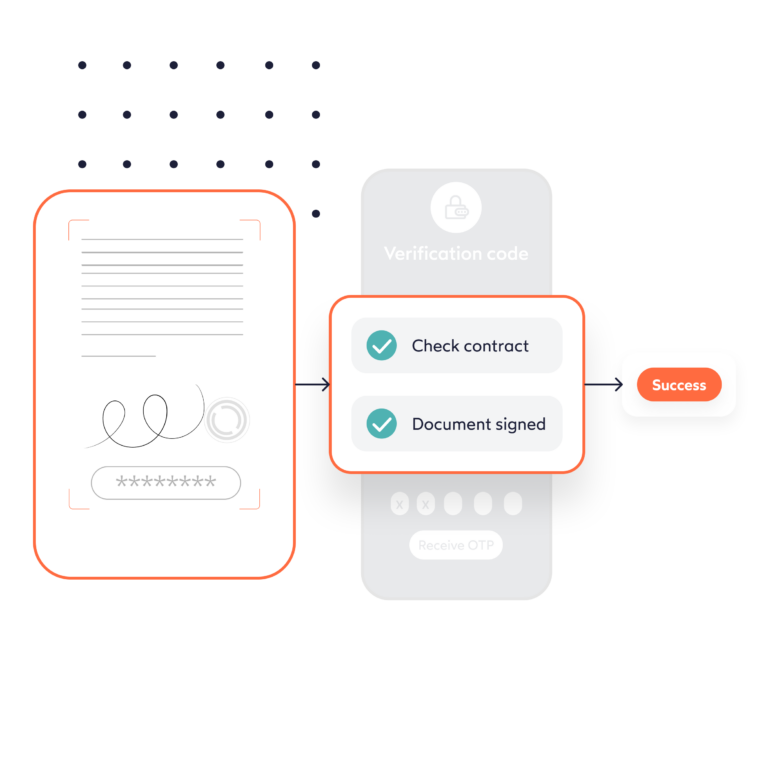How on-chain KYC and the Lightning Network will take the industry to the next level.
The future of crypto within the European Union (EU) is a complex and ever-evolving topic. The good news is that the EU is finally setting some ground rules for the crypto market. The bad news is that it has taken, and is likely to take, a long time to implement.
In recent years, there has been a growing sense of urgency to create a comprehensive crypto regulatory framework, partly due to the increasing popularity of crypto assets, as well as concerns about their potential to be used for illicit activities.
Since the beginning of the year, I have been traveling around Europe, attending events and meeting with industry insiders and thought leaders, and one thing’s for sure: the crypto market is certainly moving in the right direction. Of course, there’s always been buzz – both positive and negative – surrounding the industry, but what with upcoming regulatory frameworks like the Markets in Crypto Assets regulation, and the UK’s proposed crypto regime, there appears to be more confidence and excitement from operators, regulators and consumers.
Two recent developments, in particular, have really captivated the imagination of the industry: on-chain KYC and the Lightning Network. In fact, I recently moderated a fascinating roundtable discussion on how they’re both set to revolutionize the market. Before we delve into these topics, it’s important to know what decentralized finance (DeFi) is, and why I think it is crucial to the development of the industry.
Centralization is a risk. Why DeFi is the way to go.
There has been a lot of talk about the ‘perils’ of DeFi, with many assuming the recent failure of the likes of FTX could indicate the technology doesn’t really work. But, I think the opposite is true, and that the recent events have just emphasized that we actually need DeFi, and cannot be dependent on certain authorities. Centralization is actually a risk in itself.
Events such as the failure of FTX spark innovation and improvements, as well as regulation.
DeFi refers to a set of financial applications and platforms built on blockchain technology that aim to provide open, permissionless, and inclusive financial services. Unlike traditional centralized financial systems such as banks, DeFi eliminates intermediaries and enables direct peer-to-peer transactions and interactions through smart contracts.
Why is DeFi integral to the future of crypto?
Decentralization: DeFi operates on blockchain networks, which are decentralized and distributed across multiple computers or nodes. This decentralized nature eliminates the need for intermediaries like banks, enabling users to have more control over their funds and financial activities.
Accessibility: DeFi platforms are generally open to anyone with an internet connection, allowing individuals from around the world, including the unbanked or under banked, to access financial services. This inclusivity promotes financial empowerment and can provide opportunities for economic growth in underserved regions. By removing barriers like geographical limitations, high fees, and strict regulations, DeFi can empower individuals to take control of their finances, access capital, and participate in global markets.
Transparency: DeFi operates on public blockchains, making all transactions and activities transparent and auditable. This transparency can help build trust among users as they can independently verify and audit the underlying code, smart contracts, and transactions.
Another important reason why DeFi is the future, is programmability. The technology utilizes smart contracts, which are self-executing agreements with predefined rules and conditions. Smart contracts automate financial processes, reducing the need for manual intervention and enabling the creation of innovative financial products like decentralized exchanges, lending and borrowing platforms, prediction markets, and more.
DeFi offers various opportunities for users to earn yields on their crypto assets. Activities like liquidity provision, staking, lending, and yield farming enable individuals to earn passive income on their holdings, potentially outperforming returns from traditional financial instruments.
While DeFi has gained significant attention and adoption, it’s important to note that the space is still evolving, and there are significant risks involved, such as smart contract vulnerabilities, regulatory challenges, and market volatility. However, many believe that with further development, innovation, and user education, DeFi has the potential to revolutionize the financial industry by offering more accessible, efficient, and inclusive financial services.
Learn more about the role of KYC in a decentralized world in our blog, ‘Can Defi and KYC ever peacefully co-exist?’.
Why is MiCA so important?
Amidst the ongoing development and regulatory considerations surrounding DeFi, it is worth examining recent regulations in the crypto space within the EU. One notable example is the MiCA regulation, which was approved by the European Parliament in April 2023. This ground-breaking regulation marks the world’s first comprehensive framework specifically tailored to crypto assets.
MiCA introduces a range of requirements for crypto businesses to adhere to, including:
- Registration with national authorities
- Compliance with anti-money laundering and terrorist financing (AML/CTF) regulations
- Provision of clear information to consumers about the risks of crypto assets
MiCA provides legal clarity by defining and categorizing different types of crypto assets and activities within the EU. It sets out clear rules and definitions for crypto assets, such as cryptocurrencies, utility tokens, and stablecoins, which helps reduce ambiguity and promotes regulatory certainty for businesses and investors operating within the EU.
It also introduces a licensing framework for crypto service providers. Businesses such as crypto firms, wallet providers, and custodians must obtain authorization from competent authorities within the EU. This authorization requirement aims to enhance consumer protection and ensure compliance with Anti-Money Laundering (AML) and Counter-Terrorism Financing (CTF) regulations.
In order to safeguard the interests of investors, MiCA requires issuers of certain crypto assets to provide comprehensive and accurate information. MiCA also aims to promote market integrity and stability by setting standards for the operation of crypto exchanges and trading platforms. It includes provisions for orderly trading, transparency of prices, and measures to prevent market abuse and insider trading. These measures contribute to building trust and confidence in the crypto market.
While MiCA is undoubtedly an important step toward regulating crypto in the EU, the UK is still debating how to move forward. However, it’s important to remember that MiCA is not a complete solution to the EU’s crypto problem, as it doesn’t address on-chain KYC.
What is on-chain KYC?
On-chain KYC refers to the process of verifying the identity of a crypto user by analysing their on-chain activity. This can be done by looking at things like the addresses they use, the transactions they make, and the tokens they hold.
It is a valuable tool for law enforcement and regulators, as it can help them to identify and investigate suspicious activity, as well as track down criminals who use crypto to launder money or finance terrorism.
On-chain KYC is necessary to protect businesses and consumers, while preventing crime. If your crypto platform doesn’t cover on-chain KYC, then how well do you really Know Your Customer?
On-chain KYC is set to revolutionize DeFi and this cannot be ignored. Now let’s discuss the Lightning Network.
Why is the Lightning Network important to the future of crypto?
The Lightning Network is a second-layer payment protocol that runs on top of the Bitcoin blockchain. It allows for faster and cheaper payments and is becoming increasingly popular.
The protocol is very important as it addresses one of the biggest challenges of Bitcoin: scalability. Although Bitcoin is a very secure and decentralized network, it is also very slow and expensive to use. The Lightning Network solves this problem by allowing for off-chain payments.
How does the Lightning Network actually work?
The Lightning Network operates through the use of payment channels, where two participants open a payment channel by creating a multi-signature transaction on the underlying blockchain. This transaction serves as the funding transaction for the channel.
The Lightning Network allows participants to route payments through a network of interconnected payment channels. This routing capability makes it a scalable solution. Participants can, at any point, close a payment channel and settle the final state on the underlying blockchain. The final settlement transaction reflects the net result of all the off-chain transactions that occurred within the channel. By ultimately settling on the blockchain, participants ensure the security and immutability of the transactions.
What is driving the development of the crypto industry?
Decentralization, security and transparency are driving the evolution of the crypto industry.
The leading blockchain protocols are decentralized and are not subject to government control or control from financial institutions. This makes them an attractive proposition to people concerned about privacy and censorship. Cryptocurrencies are secured by cryptography, which makes them difficult to hack, and a more secure store of value than traditional fiat currencies.
Lastly, most blockchains are transparent, meaning all crypto transactions are recorded on a public ledger. This is not the case with traditional financial systems.
Challenges and opportunities in the DACH region.
Although they each have their specific challenges, Germany, Austria and Switzerland are great markets for crypto businesses to enter.
Some of the key challenges are the lack of regulation, as the crypto industry is still in its early stages there. Their comparatively high taxes can also make the markets a less attractive proposition to investors. And while there is a growing community of people who are aware of crypto, vast swathes of the general public in those countries don’t fully understand the topic, let alone want to be involved. However, this presents a great opportunity to both educate people about the benefits of crypto, while attracting new users.
The German government is considering a more innovative regulatory approach to cryptocurrencies, which could create a more favourable environment for crypto companies. A strong talent pool can be helpful in developing new products and services, and the DACH region has an abundance of skilled developers.
Looking at the future of crypto, I am reassured by the state of play in Europe. Yes, there are a number of challenges, but there are also a number of opportunities. The future of crypto in Europe will likely depend on how the industry addresses these challenges and capitalizes on the opportunities arising from DeFi, on-chain KYC, and the Lightning Network to create a safe, transparent, decentralized and trustworthy environment for customers.
By

Jason Tucker-Feltham
Head of Crypto Sales at IDnow
Connect with Jason on LinkedIn




